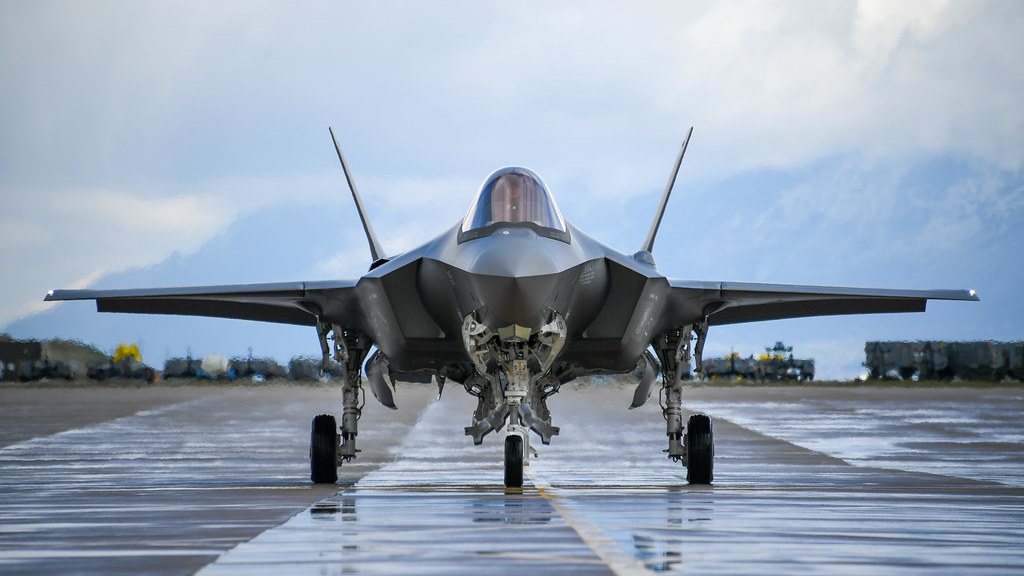
The Royal Norwegian Air Force (RNAF) is set to transition its F-35 fleet from conventional kerosene jet fuel to biofuel, marking a significant advancement in sustainable aviation. This initiative, unveiled as part of Norway’s aviation strategy, aims to showcase the feasibility of utilizing biofuels in cutting-edge military operations. However, Norway is not the originator of this concept; in November 2016, the United States pioneered the testing of biofuel-powered F-35s as part of its broader agenda to explore alternative energy sources and minimize the military’s environmental impact.
The testing, which took place at Edwards Air Force Base in California, a pivotal hub for the U.S. Air Force’s flight evaluation programs, focused on evaluating the performance and reliability of the F-35 when fueled by biofuel. The primary objectives included assessing the potential for reducing reliance on conventional fossil fuels, curbing greenhouse gas emissions, and bolstering energy security through fuel source diversification.
Hydroprocessed Esters and Fatty Acids (HEFA), a specific biofuel blend, was selected for its compatibility with existing jet engines and its capability to meet the stringent operational demands of military aircraft. Results from the tests indicated that the F-35 maintained its operational capabilities, including speed, agility, and range, when powered by the biofuel blend. This validation underscores the viability of biofuels as an alternative to traditional jet fuel for the F-35 and potentially other military aircraft.
While the utilization of biofuel did not enhance the F-35’s performance, it presented a sustainable alternative aligning with the USAF’s objectives of reducing carbon emissions and bolstering energy resilience. This successful testing underscores the potential for integrating renewable energy sources into military operations without compromising effectiveness.
The F-35 Lightning II, developed by Lockheed Martin, stands as a crucial asset in modern air combat, designed to execute a range of missions including ground attacks, reconnaissance, and air defense for the United States and its allies.
The F-35 exhibits slight dimensional variations across its three variants. The F-35A, optimized for conventional takeoff and landing, boasts dimensions of 51.4 feet in length, a wingspan of 35 feet, and a height of 14.4 feet. Meanwhile, the F-35B, tailored for short takeoff and vertical landing, and the F-35C, designed for carrier-based operations, share similar dimensions, with the F-35C featuring a slightly larger wingspan of 43 feet to facilitate enhanced carrier operations.
Critical to the F-35’s performance is its advanced stealth technology, reducing its radar cross-section and bolstering survivability. Propelled by the Pratt & Whitney F135 engine generating 43,000 pounds of thrust, the aircraft attains speeds of Mach 1.6 and carries an internal fuel capacity of around 18,250 pounds, ensuring significant operational range.
The F-35 is outfitted with an array of cutting-edge avionics, including the AN/APG-81 AESA radar, Distributed Aperture System (DAS) for comprehensive situational awareness, and Electro-Optical Targeting System (EOTS) for precision targeting. Moreover, advanced communication, navigation, and identification (CNI) systems enhance interoperability with allied forces.
Constructed with advanced composite materials, the F-35’s airframe minimizes weight while maximizing stealth capabilities. Its cockpit features a large touchscreen display and Helmet-Mounted Display System (HMDS), delivering crucial flight data directly to the pilot’s visor, thereby enhancing situational awareness and reducing workload.
The F-35’s armament capabilities are versatile, accommodating various air-to-air missiles such as the AIM-120 AMRAAM and AIM-9X Sidewinder, alongside air-to-ground munitions like the Joint Direct Attack Munition (JDAM) and the Small Diameter Bomb (SDB). Additionally, it houses an internal 25mm GAU-22/A cannon for close combat and strafing runs.
Operational range varies across variants and mission profiles, with the F-35A boasting a combat radius of approximately 590 nautical miles on internal fuel. While the F-35B and F-35C have slightly shorter ranges due to distinct design requirements, their in-flight refueling capability significantly extends operational reach, enabling prolonged missions.




